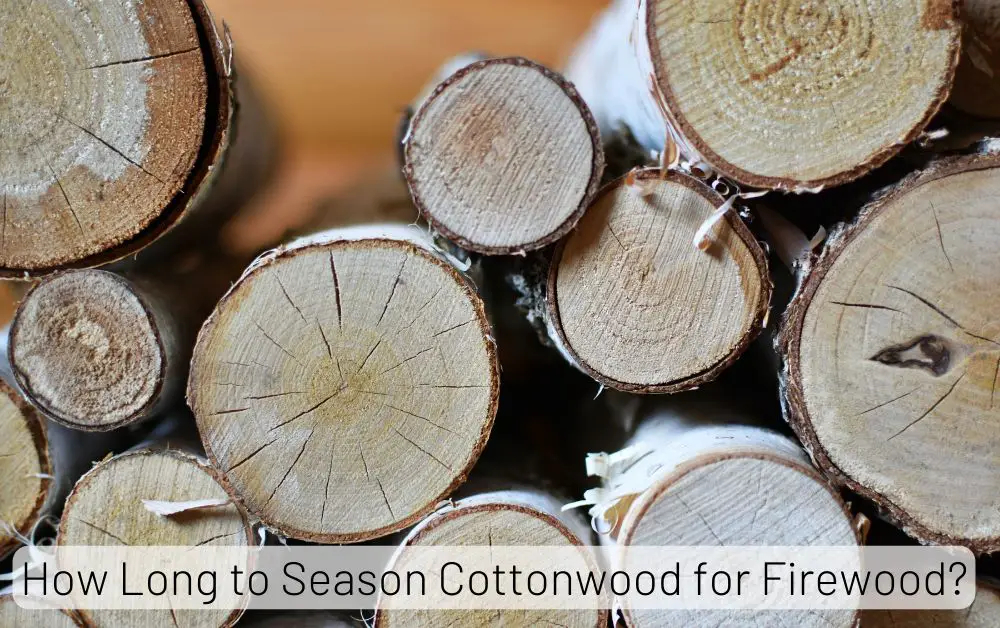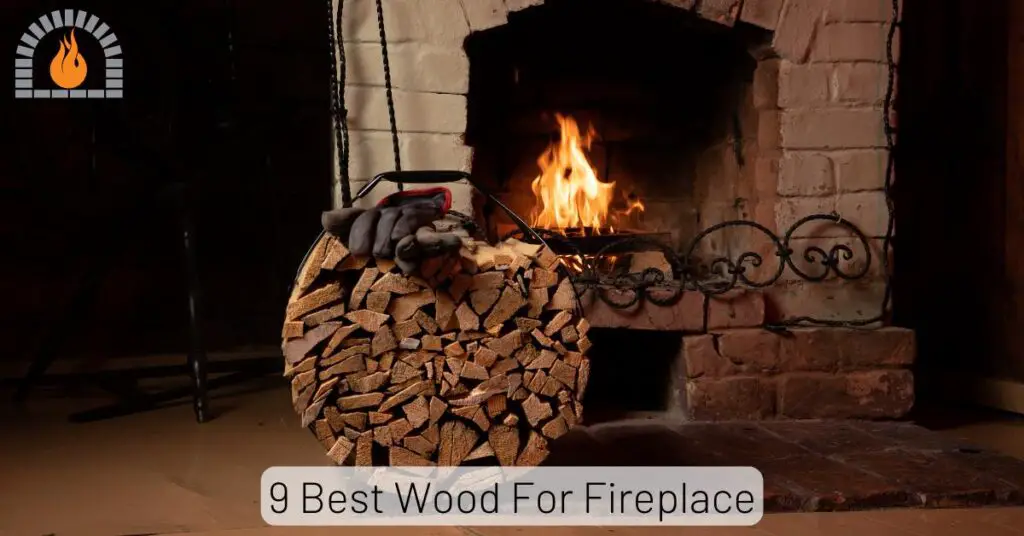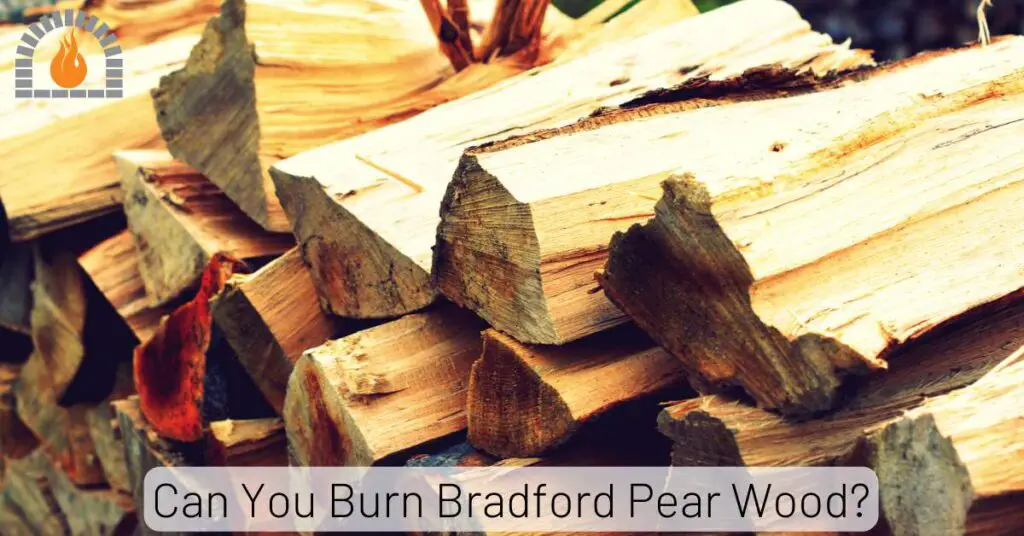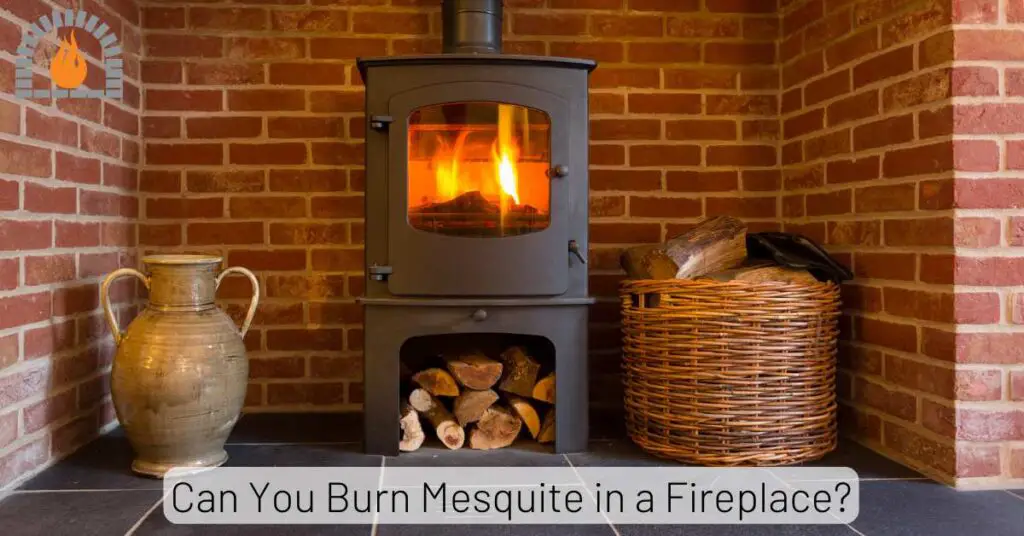Properly seasoned firewood burns hotter, produces less smoke, and prevents dangerous creosote buildup in your chimney. Learning how to dry firewood fast can transform your wood-burning experience, whether you’re heating your home or enjoying a backyard fire pit.
The key to rapid firewood seasoning lies in understanding the science of wood drying, implementing proper stacking techniques, and creating optimal conditions for moisture evaporation.
In this comprehensive guide, we’ll walk you through proven methods to reduce firewood drying time from the typical 6-12 months down to just a few months in some cases, ensuring you have dry, efficient-burning firewood when you need it most.
Key Takeaways: How to Dry Firewood Fast
- Properly seasoned firewood should have a moisture content below 20% for optimal burning
- Splitting wood into smaller pieces significantly accelerates drying time
- Correct stacking methods allow for maximum air circulation around each log
- Covering only the top of your wood pile while keeping sides exposed protects from rain while allowing moisture to escape
- Using a moisture meter is the most reliable way to determine if firewood is properly seasoned
- Hardwoods typically require 6-12 months of seasoning, while softwoods may dry in 3-6 months
- Strategic placement in sunny, windy locations can reduce drying time by up to 50%
The Science of Seasoning Firewood
Understanding the science behind wood drying will help you implement more effective techniques. Freshly cut “green” wood can contain up to 50% moisture content by weight, while properly seasoned wood should have less than 20% moisture.
Wood drying occurs through two main processes:
- Evaporation: Free water in the wood cells evaporates from the surface
- Diffusion: Bound water within the cell walls slowly moves to the surface and evaporates
The rate of drying depends on several factors:
- Wood species and density
- Initial moisture content
- Ambient temperature and humidity
- Air circulation around the wood
- Size of the wood pieces (surface area to volume ratio)
By manipulating these factors, you can significantly speed up the seasoning process.
Choosing the Right Wood for Faster Drying
Not all firewood dries at the same rate. Understanding the characteristics of different wood species can help you select or prioritize wood that will season faster.
Hardwood vs. Softwood Drying Times
| Wood Type | Examples | Average Drying Time | Heat Output (BTU per cord) |
|---|---|---|---|
| Dense Hardwoods | Oak, Hickory, Maple | 12-24 months | 24-30 million BTU |
| Medium Hardwoods | Cherry, Ash, Birch | 6-12 months | 20-24 million BTU |
| Softwoods | Pine, Fir, Spruce | 3-6 months | 14-18 million BTU |
While dense hardwoods provide more heat, they take significantly longer to season. For faster drying, focus on medium-density hardwoods or properly prepared softwoods.
Best Wood Species for Quick Seasoning
If speed is your priority, consider these wood species that typically dry faster than others:
- Ash: One of the fastest-drying hardwoods, can be ready in as little as 6 months when properly processed.
- Birch: Dries relatively quickly but should be used within a year or two as it tends to rot when stored too long.
- Pine: Though it burns quickly, pine seasons fast, making it good for kindling or for fires where you don’t need long-lasting coals.
- Fir: Similar to pine but with fewer sparks, making it a better choice for indoor fires.
- Willow: Though low in heat output, willow seasons extremely quickly.
Splitting for Faster Drying
One of the most effective ways to accelerate firewood drying is proper splitting. The process increases the surface area exposed to air, allowing moisture to escape more rapidly.
Why Splitting Accelerates Drying
When wood is split, you’re creating more surfaces from which moisture can evaporate. A round log has relatively little surface area compared to its volume, but when split into quarters or smaller pieces, the surface area increases dramatically.
Optimal Split Sizes for Fast Drying
For fastest drying, aim for these split sizes:
- Small kindling: 1-2 inches in diameter
- Medium pieces: 3-4 inches in diameter
- Large pieces: No more than 6 inches in diameter
The smaller the pieces, the faster they’ll dry, but balance this with your intended use, as very small pieces will burn too quickly for a long-lasting fire.
Tools and Techniques for Efficient Splitting
To make splitting easier and more efficient:
- Use a sharp splitting axe or maul
- Split wood when it’s fresh (green) as it’s typically easier to split than when partially dried
- Look for existing cracks in the wood and follow those lines
- Stand the piece on end and aim for the center
- Use a splitting wedge for particularly difficult pieces
For those processing large quantities, a log splitter can significantly reduce labor and time while producing consistent split sizes ideal for fast drying.
Proper Stacking Techniques
How you stack your firewood has a tremendous impact on drying time. Proper stacking allows air to circulate freely around each piece, carrying away moisture.
Best Way to Stack Firewood for Rapid Drying
Follow these guidelines for optimal stacking:
- Elevate your stack: Place wood on a platform or pallets at least 2-3 inches off the ground to prevent ground moisture absorption and improve airflow underneath.
- Choose a sunny location: Position your stack where it will receive maximum sunlight exposure, which helps accelerate evaporation.
- Create single rows: Stack wood in single rows rather than multiple piles against each other. This allows air to circulate on all sides.
- Leave space between rows: If stacking multiple rows, leave at least 1-2 feet between them for cross-ventilation.
- Stack loosely: Don’t pack the wood tightly together. Leave small gaps between pieces to allow air movement.
- Alternate direction: Place one layer facing east-west, then the next layer north-south. This crisscross pattern creates stability and improves airflow.
Firewood Stacking Methods Compared
| Stacking Method | Drying Speed | Stability | Space Efficiency | Best For |
|---|---|---|---|---|
| Single Row | Fastest | Moderate | Low | Maximum drying speed |
| Holz Hausen (Round) | Fast | High | High | Aesthetics and good drying |
| Traditional Pile | Slow | High | High | Long-term storage |
| Wood Shed | Moderate | High | Moderate | Weather protection |
Creating the Ideal Wood Pile
For the fastest drying, create a stack that’s:
- No more than 4 feet high
- No wider than a single log length
- Oriented to face prevailing winds
- Positioned for maximum sun exposure
- Covered on top but open on the sides
Ideal Storage Conditions
Where and how you store your drying firewood can make a significant difference in drying time.
Location Selection for Maximum Airflow
Choose a storage location that offers:
- Full sun exposure for at least part of the day
- Protection from heavy rain (but not necessarily all moisture)
- Good natural airflow
- Distance from buildings (to prevent pest problems)
- Easy access for both stacking and eventual use
Weather Considerations
Different weather conditions affect drying rates:
| Weather Condition | Impact on Drying | Recommendation |
|---|---|---|
| Hot, Dry, Windy | Optimal | Take advantage of these periods for fastest drying |
| Hot, Humid | Slow drying | Ensure maximum airflow between pieces |
| Cold, Dry | Moderate drying | Slower than warm conditions but still effective |
| Cold, Wet | Minimal drying | Protect from additional moisture and wait for better conditions |
| Rainy | Moisture gain | Cover top of pile only, allowing sides to breathe |
Seasonal Timing for Firewood Drying
The timing of when you cut and stack your firewood affects how quickly it will be ready:
- Spring/Summer Cutting: Wood cut during warm months will dry fastest initially but may absorb moisture during humid summer nights.
- Fall Cutting: Wood cut in fall will face approaching winter, slowing the drying process significantly.
- Winter Cutting: Frozen wood can be difficult to split, and the cold temperatures slow evaporation.
- Ideal Timing: Late winter/early spring cutting allows wood to take advantage of the increasingly warm and dry months ahead.
Accelerating the Drying Process
While natural air drying is the most common method, several techniques can help speed up the process.
Solar Drying Techniques
Harnessing solar energy can significantly accelerate firewood drying:
- Create a solar kiln: Build a simple structure with clear plastic sheeting over your wood pile. This creates a greenhouse effect, raising temperatures and speeding evaporation.
- Use dark surfaces: Place dark tarps or surfaces under and around your wood pile. Dark colors absorb more solar radiation, transferring heat to the wood.
- Position for maximum sun exposure: Track the sun’s path across your property and position your stack where it will receive the most direct sunlight.
Forced Air Drying Methods
For those needing to dry firewood quickly, forced air methods can reduce seasoning time dramatically:
- Use fans: Position fans to blow air across your wood stacks. This increases the rate of moisture evaporation.
- Create a dehumidification system: For indoor drying, a dehumidifier in a closed space with your firewood can extract moisture efficiently.
- Build a forced-air kiln: More advanced setups can include solar-powered fans and vents to create controlled airflow through the wood pile.
Kiln Drying Firewood
Kiln drying is the fastest method for seasoning firewood, reducing drying time from months to days or weeks:
- Professional kilns: Commercial operations use large kilns to dry firewood quickly and consistently.
- DIY kilns: Small-scale versions can be created using sheds, heaters, and fans.
- Solar kilns: Use solar energy to heat and circulate air through the wood pile.
While kiln drying is fastest, it requires more equipment and energy investment than air drying.
Testing for Moisture Content
Knowing when your firewood is properly seasoned is crucial for optimal burning. While there are visual and tactile clues, the most accurate method involves measuring moisture content.
Using a Moisture Meter
A wood moisture meter is the most reliable tool for determining if firewood is ready to burn:
- How to use: Insert the probes into the wood’s surface to get a reading of moisture content.
- Target moisture level: Properly seasoned firewood should read below 20% moisture content.
- Testing technique: Test multiple pieces from different parts of the stack, and take readings from the freshly split surface rather than the outer weathered part.
Visual and Physical Indicators of Dry Firewood
If you don’t have a moisture meter, look for these signs:
- Color: Seasoned wood is typically grayish or weathered in appearance, compared to the fresh look of green wood.
- Weight: Dry wood feels significantly lighter than green wood of the same size.
- Cracks: Small cracks on the ends of logs indicate drying has occurred.
- Sound: When two pieces of dry wood are banged together, they produce a sharp, hollow sound rather than a dull thud.
- Bark: Loose bark that easily falls off is a sign of well-seasoned wood.
The Split Test
For a quick field test without tools:
- Split a piece of wood
- Feel the freshly split surface
- If it feels warm and dry, the wood is likely seasoned
- If it feels cool and damp, it needs more drying time
Common Mistakes to Avoid
When trying to dry firewood quickly, certain mistakes can actually slow the process or create problems.
Improper Storage Errors
- Covering the entire pile: Wrapping firewood completely in tarps traps moisture and prevents evaporation. Only cover the top of the stack.
- Stacking directly on the ground: Ground moisture will wick into the bottom layers, preventing proper drying and potentially causing rot.
- Stacking against buildings: This can trap moisture, reduce airflow, and create pest problems that may extend to your home.
- Creating piles that are too tall: Tall stacks (over 4 feet) can become unstable and restrict airflow to the bottom layers.
Processing Mistakes
- Leaving wood in round form: Unsplit logs dry extremely slowly compared to split wood.
- Cutting pieces too long: Longer logs have less surface area relative to their volume, slowing drying.
- Mixing wood species in the same stack: Different species dry at different rates, making it difficult to track when everything is ready.
Timing Errors
- Waiting too long to split wood: Wood that’s left in log form for months before splitting will take much longer to season.
- Trying to season too late in the year: Wood cut in late fall faces winter conditions that halt the drying process.
Seasonal Considerations
Different seasons present unique challenges and opportunities for drying firewood.
Spring and Summer Drying
Spring and summer offer the best natural conditions for drying firewood:
- Advantages: Warm temperatures, longer days, and lower humidity create ideal drying conditions.
- Challenges: Occasional rain showers and high humidity periods can slow drying.
- Strategies:
- Take advantage of long sunny days by positioning stacks for maximum exposure
- Leave wood uncovered during dry spells
- Cover only the tops of piles during rainy periods
- Stack in single rows for maximum airflow
Fall Drying
Fall presents mixed conditions for firewood drying:
- Advantages: Cooler temperatures reduce insect activity; still some warm days.
- Challenges: Increasing rainfall and decreasing temperatures slow drying.
- Strategies:
- Focus on wood that’s already partially dried
- Ensure top coverage to protect from autumn rains
- Position stacks to catch what sun remains
- Consider moving partially dried wood to covered storage with good airflow
Winter Drying
Winter is the most challenging season for drying firewood:
- Advantages: Low humidity in some regions; frozen wood can sometimes split easier.
- Challenges: Cold temperatures dramatically slow evaporation; snow and ice add moisture.
- Strategies:
- Focus on maintaining dryness rather than active drying
- Keep wood well-covered on top but ventilated on sides
- If possible, move wood to a sheltered location like a garage or woodshed
- Plan for winter to be a holding period until spring drying can resume
FAQs
How long does it typically take to season firewood?
The seasoning time varies significantly based on wood species and drying conditions:
Softwoods (pine, fir): 3-6 months
Medium-density hardwoods (ash, maple): 6-12 months
Dense hardwoods (oak, hickory): 12-24 months
Using the accelerated methods in this guide can potentially reduce these times by 30-50%.
Can I burn unseasoned wood if I’m in a hurry?
Burning unseasoned or “green” wood is not recommended for several reasons:
It produces significantly less heat (up to 30% less BTU output)
It creates excessive smoke and harmful emissions
It contributes to dangerous creosote buildup in chimneys
It can lead to a smoldering fire that’s hard to maintain
If you absolutely must burn wood that isn’t fully seasoned, mix it with well-seasoned wood in a ratio of no more than 1:4 (green to seasoned).
Does covering firewood help it dry faster?
Covering firewood requires a balanced approach:
Cover only the top: This protects from rain while allowing moisture to escape from the sides
Never cover the sides: Completely wrapping firewood traps moisture and prevents drying
Use breathable covers: Canvas or specialized firewood covers are better than plastic tarps
Remove covers during dry periods: Allow direct sun and air exposure when weather permits
Affiliate Disclosure: Fireplaceadviser.com is a participant in the Amazon Services LLC Associates Program. We may earn a commission when you click on certain links on this site and purchase.

Hello!! I am Jamal Khan. I often fix my home electric heaters and gas stove problems and research the common issues in the heating units to improve my knowledge and expertise. The aim of establishing fireplaceadviser.com is to share my expertise and knowledge with my audience.


















